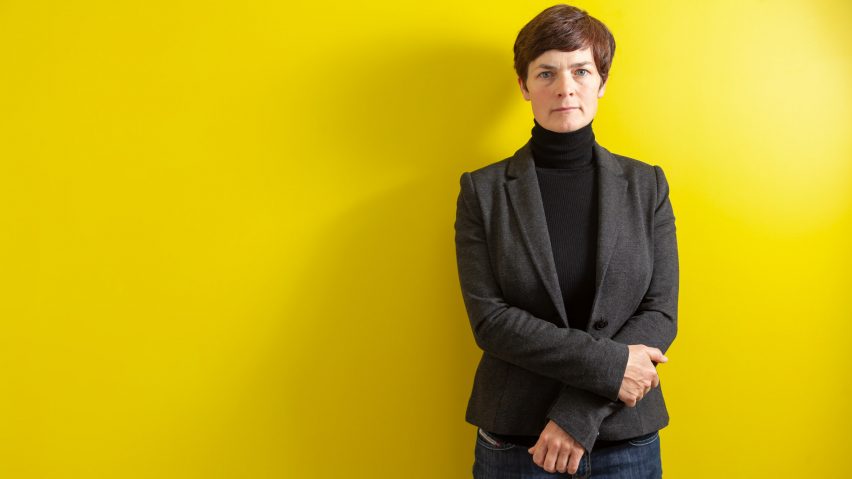Designers and brands must go beyond recycling and focus on making bigger, systems-level changes to help the world move to a circular economy and ultimately reach its net-zero goals, says Ellen MacArthur.
Today, we use the equivalent of 1.6 Earths a year to provide the resources we use and absorb our waste. This means it takes the planet one year and eight months to regenerate what we use in a single year.
Much like running up financial debts, which can result in bankruptcy, when we draw down too much stock from our natural environment without ensuring and encouraging its recovery, we run the risk of local, regional and eventually global ecosystem collapse. The circular economy is a way to solve this by decoupling economic growth from the consumption of finite resources.
It's about redesigning products, services and the way our businesses work to shift our whole economy from one that is locked into a take-make-waste system to one that eliminates waste, circulates products and materials, and regenerates nature.
Designers must go way beyond simply rethinking how they make individual products
The circular economy gives us a framework that can help to solve our biggest global challenges at the same time. And the last two years have seen circular design and innovation rapidly increasing, pretty much everywhere.
Around the world, we are seeing more and more businesses use the circular economy to change the way they work and tackle the root causes of climate change, biodiversity loss, waste and pollution.
However, to drive action forward, it is crucial that we focus upstream to prevent waste before it is created. Designers must go way beyond simply rethinking how they make individual products and consider the entire system that surrounds them.
This includes the business models, the ways in which customers access products and what happens to those products when we have finished with them, so we can keep the materials in the system for as long as possible.
The opportunities are clear and renewed ambition levels from 2021 are positive but shifting the system is a challenge. We need scale and we need it quickly.
Some very strong examples of designers and big companies innovating for a circular future are featured in the Ellen MacArthur Foundation's recent study, which focused on rethinking business models for a thriving fashion industry.
Innovation continues to ramp up as the world seeks solutions to plastic pollution
Research revealed that by maximising the potential of economic and environmental impacts, circular business models in sectors such as rental, resale, remake and repair have the potential to claim 23 per cent of the global fashion market by 2030 and grasp a $700 billion opportunity.
The study cites tangible examples of how businesses such as [luxury resale platform] The RealReal and Rent the Runway (RTR), among many others, are innovating to embrace circular models.
In other industries, we are seeing refurbished electronics as a growing space. This January, Back Market – a Paris-based business that refurbishes iPhones – was valued at $5.7 billion, making it France's most valuable startup.
Innovation continues to ramp up as the world seeks solutions to plastic pollution. But invariably, this market faces a lot of its own barriers. Efforts concentrating on downstream solutions such as recycling are undoubtedly a necessary component.
But we need to ensure that we eliminate all problematic and unnecessary plastic items, innovate to ensure that the plastics we do need are reusable, recyclable or compostable, and circulate all the plastic items we use to keep them in the economy and out of the environment.
The circular economy is needed to get to net-zero emissions. While 55 per cent of emissions can be tackled by the transition to renewable energy, the remaining 45 per cent of greenhouse gas emissions come from the way we make and use products and food, and manage land.
To deliver the climate and biodiversity benefits of a circular economy, businesses and governments must work together to change the system, and this means redesigning the way we make and use products and food. This shift will give us the power to not only reduce waste, pollution and greenhouse gas emissions but also to grow prosperity, jobs, and resilience.
We are continuing to witness an abundance of positive circular innovation centred at tackling climate change – not least UK-based Winnow, which works to reduce food waste through data and now saves 61,000 tonnes of carbon emissions per year. Our next steps must be to ensure that continuing innovation is supported and enabled to accelerate and scale.
We need to work together to create a system that allows us all to make better choices
Transitioning to the circular economy requires all stakeholders across systems to play their part. The role of all businesses, regardless of size, is vital if we are to find new, circular ways of creating, delivering and capturing value that also benefits society and the environment. No one can say how long this transformation will take, but what we can say is that it is already well underway.
We need businesses and governments to work together to create a system that allows us all to make better choices, choices that are part of the solution to global challenges rather than part of the problem.
Ellen MacArthur is a former round-the-world sailor, who retired from yachting to launch the Ellen MacArthur Foundation in 2010. Dedicated to accelerating the shift towards a circular economy, the charity has partnered with some of the biggest brands in the world and published a number of influential reports on plastic pollution and textile waste, alongside practical guides on how to design products and garments in a more circular way.

